With its high-quality optics, wide apertures, and fixed focal lengths, a prime lens offers numerous advantages for photographers. Their ability to deliver sharp, detailed images and perform well in low light conditions makes them a valuable addition to any photographer’s gear. Despite some limitations, such as the lack of zoom functionality, the benefits often outweigh the drawbacks.
Choosing the right prime lens depends on your specific needs, budget, and the type of photography you do most. By understanding your requirements and considering factors such as focal length, maximum aperture, and lens quality, you can select a prime lens that will significantly enhance your photography.
Once you’ve chosen a prime lens, proper care and maintenance will ensure it continues performing at its best. Regular cleaning, proper storage, and occasional professional servicing can help maintain the lens’s performance and prolong its life.
In different genres of photography, prime lenses can be used to great effect. From creating beautifully blurred backgrounds in portrait photography to capturing wide, expansive landscapes to revealing tiny details in macro photography, prime lenses can elevate your photographic work.
Introduction to Prime Lens
Definition of a Prime Lens
A prime lens is a camera lens characterized by its fixed focal length. This lens type doesn’t have the zoom feature, unlike zoom lenses that offer a range of focal lengths. Prime lenses’ single focal length feature provides unparalleled quality and performance in specific photography scenarios.
These lenses stand out due to their superior optical quality, simplicity in design, and wide maximum apertures they often offer. They’re favored for their ability to deliver sharper images and better low-light performance than many zoom lenses. Their limitations can, surprisingly, inspire creativity by pushing photographers to move and explore new angles and perspectives.
History and Evolution of Prime Lenses
The history of prime lenses is as old as photography itself. The early years of photography saw the exclusive use of prime lenses, as zoom lenses were not invented until the mid-20th century. Over the years, prime lenses have evolved, with advancements in technology enhancing their performance, improving their image quality and reinforcing their relevance and appeal to photographers.
These lenses have progressed from simple glass elements in vintage cameras to sophisticated engineering in today’s digital cameras, demonstrating their enduring impact and influence in photography.
Basic Functionality of a Prime Lens
At the most fundamental level, a prime lens captures light through its aperture and directs it onto the camera’s sensor, creating a crisp image. This process is made efficient by the fixed focal length of the lens, which doesn’t require the same level of complex lens construction found in zoom lenses.
Prime lenses often come with a wide aperture, allowing for more light to be captured. This feature is particularly advantageous in low light conditions, enabling photographers to take photos without resorting to a high ISO or slow shutter speed, thereby maintaining image quality and reducing the chance of motion blur.
Differentiating Prime Lenses from Zoom Lenses
While both prime and zoom lenses have distinct benefits, they differ significantly in functionality. Unlike prime lenses, zoom lenses offer a range of focal lengths, allowing for more flexibility in framing and composing shots without needing to change the lens or move closer or further from the subject.
However, this versatility often comes at the cost of image quality, lens sharpness, and fast aperture capabilities. With their fixed focal length, Prime lenses offer better image quality and wider maximum apertures and are generally lighter and more compact than their zoom counterparts.
Importance of Prime Lenses in Photography
The importance of prime lenses in photography cannot be overstated. Their ability to deliver superior image quality and perform exceptionally well in low-light situations makes them a valuable tool for photographers. These lenses inspire creativity, pushing photographers to explore unique perspectives.
Their wide maximum aperture allows for a shallow depth of field, achieving a pleasing bokeh effect that creatively blurs the background, thus making the subject stand out. Whether for portrait, street, or landscape photography, prime lenses can enhance the final result and elevate the overall photographic experience.
The Top Prime Lens Options on Amazon
| Top Pick: Sony SEL35F18 35mm f/1.8 Prime Fixed Lens | Runner Up: Fujifilm XF35mmF1.4 R Lens | Best Value: Canon EF-S 24mm f/2.8 STM Lens | |
|---|---|---|---|
| Rating | Top Pick | Runner Up | Best Value |
| Focal Length | 35mm | 35mm (53mm equivalent) | 24mm (38mm equivalent) |
| Max Aperture | f/1.8 | f/1.4 | f/2.8 |
| Optical Design | Excellent peripheral sharpness/contrast | 8 elements in 6 groups | Aspheric element |
| Stabilization | Built-in | No | No |
| Format Compatibility | APS-C (Sony E/NEX) | APS-C (Fujifilm X) | APS-C (Canon EF-S) |
| Manual Focus | Available | May require adjustment | Full-time |
| Minimum Focusing Distance | N/A | Approximately 28cm | 0.5 ft. (0.16m) |
| Weight/Size | Compact | Compact | Slimmest in the EF-S series |
| Pros | Versatile, excellent sharpness, stabilization | Excellent image clarity, beautiful bokeh, versatile | Compact, excellent image quality, fast aperture |
| Cons | Fixed focal length, limited compatibility | Fixed focal length, limited compatibility | Fixed focal length, limited compatibility |
Sony SEL35F18 35mm f/1.8 Prime Fixed Lens
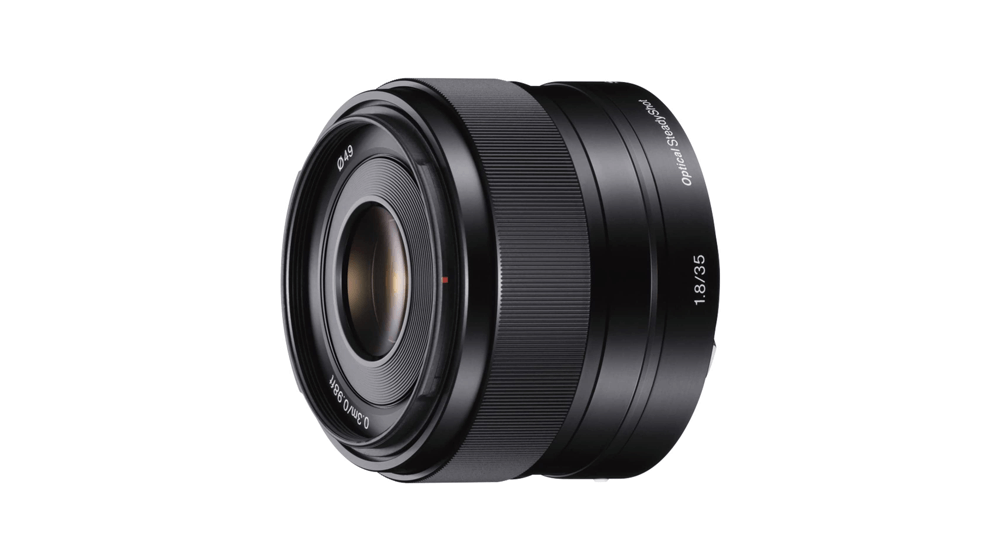
Top Pick: The Sony E 35mm F1.8 OSS Prime Lens delivers great results whether you’re taking snapshots while strolling, shooting at night with its bright maximum aperture, or capturing stunning portraits with beautiful background/foreground blur, this lens.
Key Features:
- Wide-angle lens with a fixed F1.8 aperture
- Angle of View (APS C): 44° for expansive shots
- Compact design for easy portability
- New optical design for excellent peripheral sharpness and contrast
- Built-in image stabilization for steady shots
- Silent and smooth high-speed focusing for movies
- Direct manual focus for precise control
- Format: APS-C, equivalent focal length (APS-C): 52.5mm
- Lens not zoomable
Pros:
- Compact and lightweight, perfect for carrying around
- Excellent peripheral sharpness and contrast
- Effective image stabilization for steady shots
- Smooth and silent high-speed focusing
- Versatile lens for various photography styles
Cons:
- Fixed focal length limits zoom capabilities
- May require manual focus adjustment at times
- Limited compatibility with Sony E (NEX) mountings
- Not suitable for long-distance shots
Sony SEL35F18 35mm f/1.8 Prime Fixed Lens
Fujifilm XF35mmF1.4 R Lens
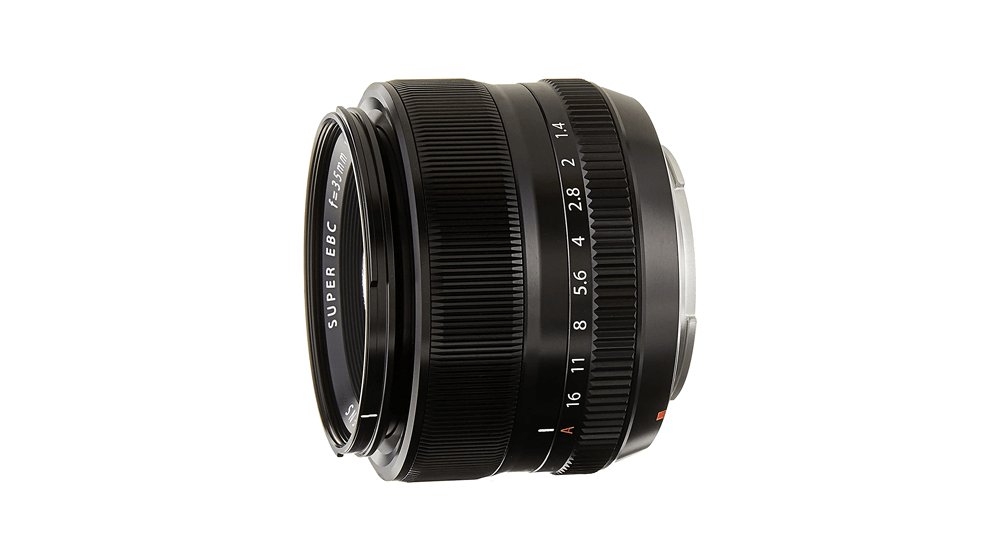
Runner Up: The Fujifilm XF35mmF1.4 R Lens. This high-performance standard lens offers a focal length equivalent to 53mm in the 35mm film format, making it a must-have optic for Fujifilm X-Series owners. With its bright maximum aperture of F1.4 and advanced optical design, this lens delivers exceptional definition and image quality even when shooting wide open.
Key Features:
- Focal length equivalent to 53mm for a standard perspective
- Bright maximum aperture of F1.4 for excellent low-light performance
- Advanced optical design with 8 elements in 6 groups, including 1 aspherical element
- Smooth bokeh and in-focus reproduction for stunning depth
- Minimum focusing distance of approximately 28cm for versatile shooting
- Lightweight and compact design for portability
Pros:
- Excellent image clarity and definition, even at wide apertures
- Beautiful bokeh and depth of field for artistic effects
- Versatile focal length suitable for various photography genres
- High-quality construction and optical performance
- Compact and lightweight design for easy carrying
Cons:
- Fixed focal length limits zoom capabilities
- Slightly larger aperture range compared to other lenses
- May require manual focus adjustment for precise results
- Limited compatibility with Fujifilm X mountings
Canon EF-S 24mm f/2.8 STM Lens

Best Value: The Canon EF-S 24mm f/2.8 STM Lens is a wide-angle lens that provides a focal length equivalent to 38mm on a full-frame camera, making it suitable for a variety of purposes. With its slim and lightweight design, it’s the slimmest lens in the EF-S series, ensuring easy portability and handling.
Key Features:
- Fast and versatile wide-angle lens
- Focal length of 24mm and maximum aperture of f/2.8
- Slim and lightweight construction
- Advanced AF system for accurate and precise focus
- Aspheric element for high image quality
- Specialized lens coatings to reduce ghosting and flare
- Full-time manual focus for fine adjustments
- Minimum focusing distance of 0.5 ft. (0.16m)
- Compatible with all non-full-frame Canon EOS digital SLRs
Pros:
- Compact and lightweight, ideal for travel and everyday use
- Fast aperture for capturing sharp images in low-light conditions
- Excellent image quality from center to corners
- Silent and smooth focus tracking during movie shooting
- Versatile wide-angle perspective for various photography styles
Cons:
- Fixed focal length limits zoom capabilities
- Not compatible with full-frame Canon EOS cameras
- Limited to APS-C format cameras with Canon EF-S mountings
- Manual focus adjustment required for one-shot AF mode
Canon EF-S 24mm f/2.8 STM Lens
OM SYSTEM OLYMPUS M.Zuiko Digital ED 12mm Wide Angle Lens
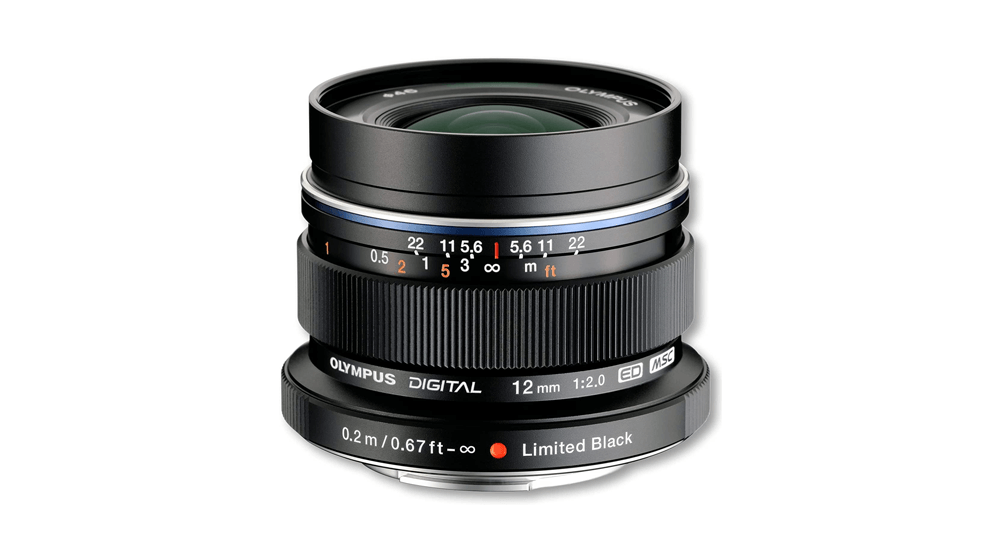
Capture stunning landscapes and spontaneous street shots with the OM SYSTEM OLYMPUS M.Zuiko Digital ED 12mm Wide Angle Lens. This high-speed, single-focal-length lens delivers exceptional performance in low-light conditions, thanks to its maximum f/2.0 aperture. Its 24mm equivalent field of view is perfect for street photography and expansive landscapes. The premium metallic construction ensures durability, while the snap focus ring with a distance scale allows for precise manual focusing.
Key Features:
- Ultra-wide angle lens with a focal length of 12mm
- Maximum f/2.0 aperture for excellent low-light performance
- Minimum focusing distance of 7.9 inches
- 24mm equivalent field of view for street shots and landscapes
- Premium metallic construction for durability
- Snap focus ring with distance scale for manual focusing
- Optional all-metal lens hood and cap available
Pros:
- Exceptional low-light performance for captivating images
- Ultra-wide angle perspective for dramatic landscapes
- Premium build quality for long-lasting durability
- Snap focus ring enables quick and precise manual focusing
- Compact and lightweight design for easy portability
Cons:
- Fixed focal length limits versatility in certain situations
- Not compatible with cameras using a different mount
- Limited zoom capabilities, requiring physical movement for framing
- Optional lens hood and cap may incur additional cost
OM SYSTEM OLYMPUS M.Zuiko Digital ED 12mm Wide Angle lens
Sigma 85mm Large Aperture Medium Telephoto Prime Lens
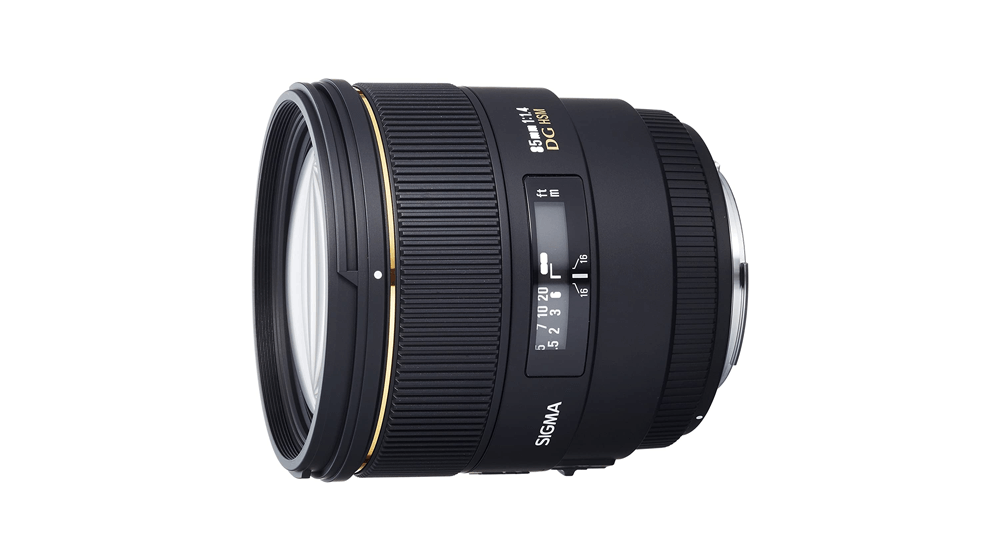
The Sigma 85mm Large Aperture Medium Telephoto Prime Lens has a distinctive focal length and large aperture of f/1.4 offering exceptional versatility and image quality. Designed for full-frame sensors, it delivers great results from portraits to everyday images. Equipped with Sigma’s advanced technology, including a Hyper Sonic Motor (HSM) for quiet and accurate autofocusing, Super Multi-Layer Coating to minimize flare and ghosting, and a rear focusing system to minimize aberration caused by focusing, this lens ensures unmatched performance.
Key Features:
- Large aperture of f/1.4 for outstanding low-light performance
- Distinctive 85mm focal length for versatile usage
- Hyper Sonic Motor (HSM) for quiet and high-speed autofocus
- Super Multi-Layer Coating to reduce flare and ghosting
- Rear focusing system for minimized aberration
- Dedicated lens hoods to block extraneous light
- Glass coating for enhanced backlighting results
- 9-blade diaphragm for pleasing background effects
Pros:
- Exceptional image quality and sharpness
- Versatile focal length for portraits and everyday photography
- Fast and accurate autofocus for capturing fleeting moments
- Excellent low-light performance for stunning results
- Beautiful background blur for artistic effects
Cons:
- Fixed focal length limits zoom capabilities
- Slightly heavier weight compared to other lenses
- Limited compatibility with Canon EF mountings
- Lens not zoomable, requiring physical movement for framing
Sigma 85mm Large Aperture Medium Telephoto Prime Lens
Sony SEL-20F28 E-Mount 20mm F2.8 Prime Fixed Lens
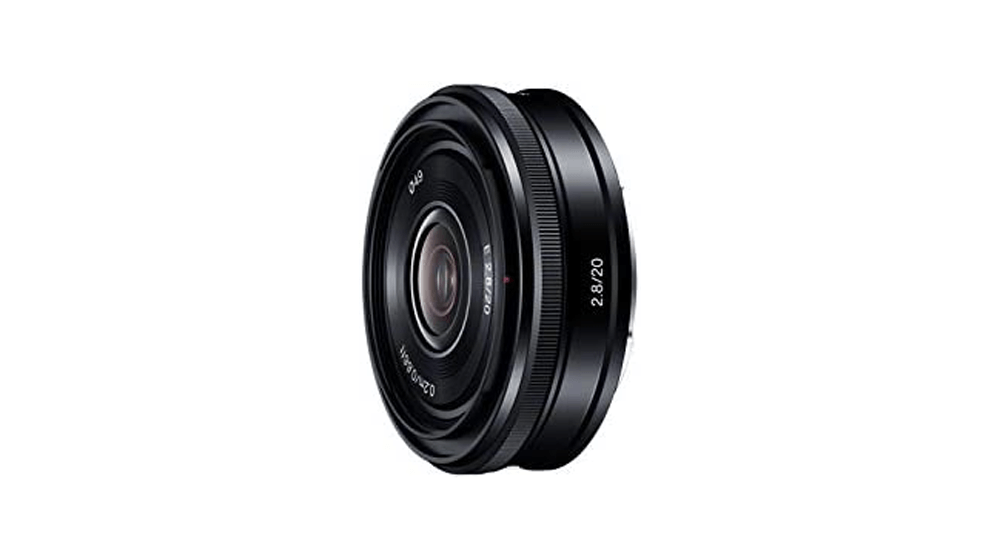
Capture superior image quality with the Sony SEL-20F28 E-Mount 20mm F2.8 Prime Fixed Lens. Designed for Sony E-mount cameras, this wide-angle lens offers a focal length of 20mm (30mm in 35mm full-frame format) and a bright F2.8 maximum aperture. Whether you’re an experienced photographer or a small business owner seeking high-quality images, this lens delivers outstanding resolution and performance.
Key Features:
- Compact and portable pancake design
- Three aspheric elements for superb contrast and resolution
- Circular aperture for smooth bokeh and defocused backgrounds
- Minimum focus distance of 0.66 feet for versatility in shooting
- Broad 70° angle of view for capturing expansive scenes
Pros:
- Outstanding resolution and image quality
- Lightweight and portable design
- Wide-angle perspective for expansive shots
- Smooth and attractive bokeh effect
- Versatile minimum focus distance for close-up photography
Cons:
- Fixed focal length limits zoom capabilities
- Slightly larger aperture range compared to other lenses
- Limited compatibility with Sony E-mount cameras
- Some distortion may occur at extreme angles
Sony SEL-20F28 E-Mount 20mm F2.8 Prime Fixed Lens
Canon EF 24mm f/1.4L II USM Wide Angle Fixed Lens
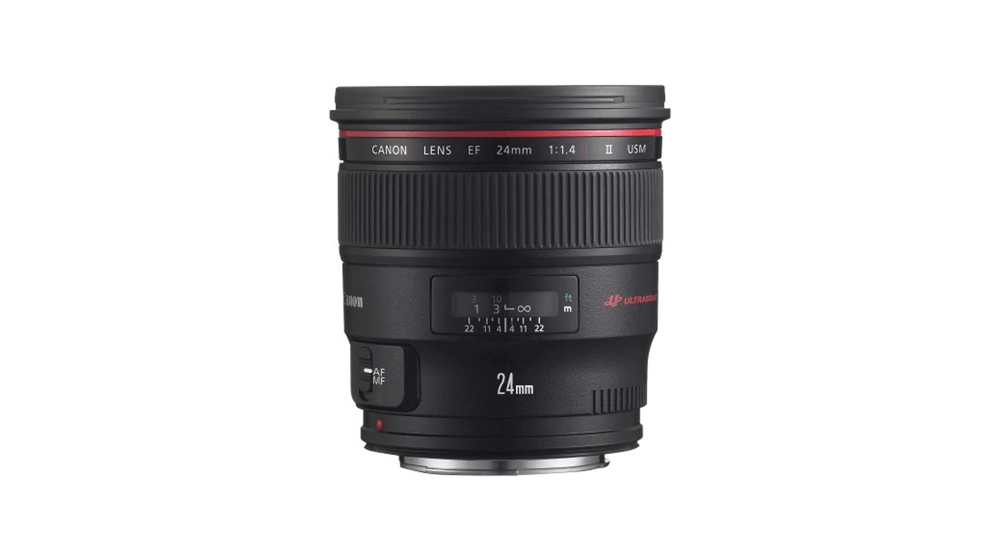
Experience exceptional image quality and performance with the Canon EF 24mm f/1.4L II USM Wide Angle Fixed Lens. Designed as a part of Canon’s prestigious L-series, this lens is ideal for small business owners who seek sharpness and versatility in their photography. With advanced Canon lens technology and a wide f/1.4 aperture, this lens delivers outstanding results in various shooting conditions.
Key Features:
- Large-diameter aspherical lenses for edge-to-edge sharpness
- Anti-reflective SWC coating to minimize ghosting and flaring
- UD lens elements for reduced chromatic aberrations
- Fast and quiet autofocus with full-time manual override
- Circular aperture for beautiful bokeh and detail
- Dust- and water-resistant construction for durability
Pros:
- Exceptional image sharpness and clarity
- Wide maximum aperture for low-light shooting and shallow depth of field
- Versatile focal length for various photography genres
- Reliable autofocus performance
- Durable construction suitable for different environments
Cons:
- Fixed focal length limits flexibility in framing
- Relatively large and heavy compared to other wide-angle lenses
- Higher price point compared to other options
- Some distortion may be present at extreme angles
Canon EF 24mm f/1.4L II USM Wide Angle Fixed Lens
Sony SEL85F18 85mm Medium-Telephoto Fixed Prime Camera Lens
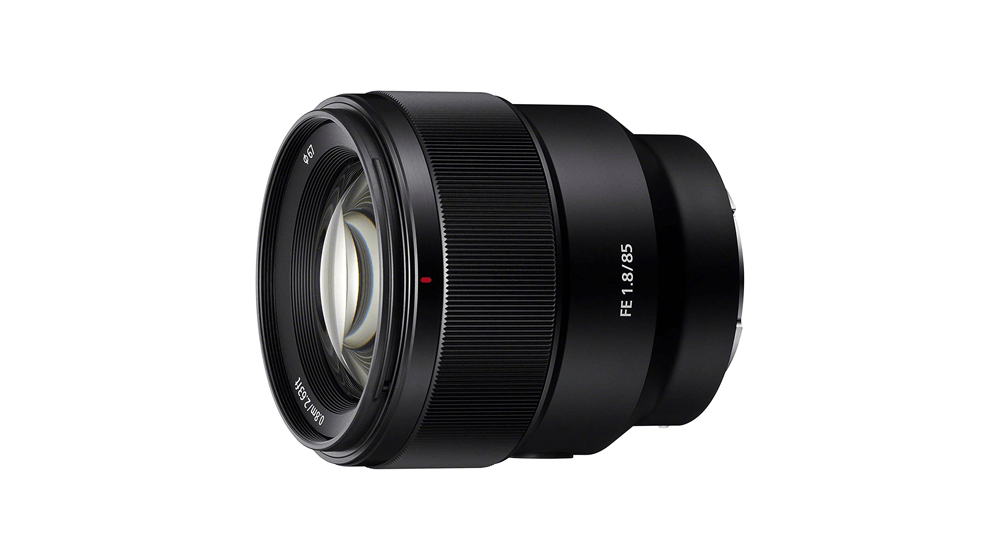
The Sony SEL85F18 85mm Medium-Telephoto Fixed Prime Camera Lens is designed for Sony Alpha full-frame E-mount cameras. With a wide F1.8 maximum aperture and a 9-blade circular aperture, it produces gorgeous round bokeh for visually appealing backgrounds. The lens features an ED glass element for corner-to-corner sharpness and a double linear motor system for fast, precise, and quiet focusing. It also offers convenient direct control with a customizable focus hold button and AF/MF switch.
Key Features:
- Wide F1.8 maximum aperture for stunning defocusing effects
- 9-blade circular aperture for beautiful round bokeh
- ED glass element for corner-to-corner sharpness
- Double linear motor system for fast and quiet focusing
- Customizable focus hold button and AF/MF switch
Pros:
- Excellent image quality and sharpness
- Beautiful background defocus effects
- Lightweight and compact design for portability
- Versatile for both full-frame and APS-C cameras
- Dust and moisture resistant for outdoor use
Cons:
- Fixed focal length limits flexibility
- May require some distance for close-up shots
- Autofocus performance may be slower in low-light conditions
- Higher price compared to other options in its range
Sony SEL85F18 85mm Medium-Telephoto Fixed Prime Camera Lens
Canon RF16mm F2.8 STM Lens
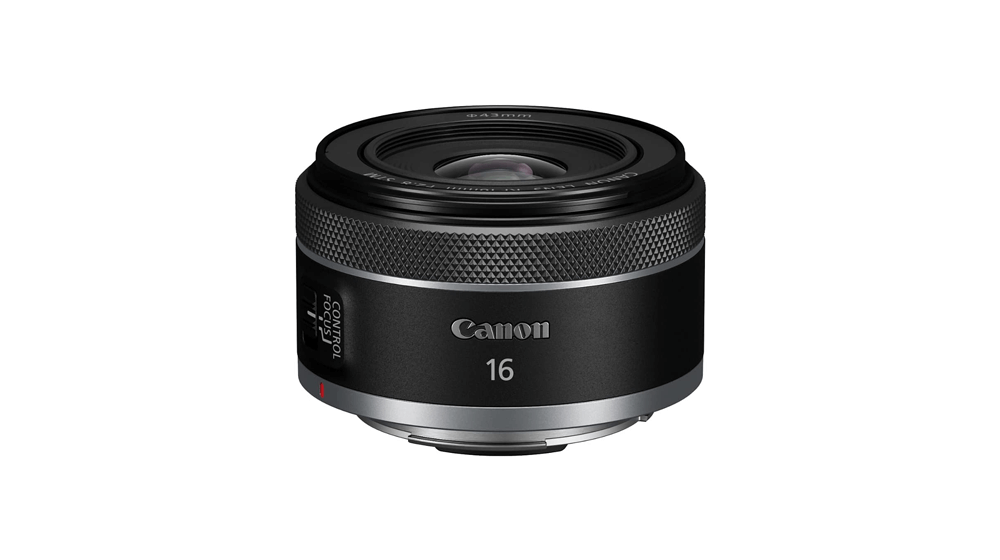
The Canon RF16mm F2.8 STM Lens is its first ultra-wide-angle, fixed focal length lens in the RF lineup. With its high image quality and bright f/2.8 maximum aperture, this lens delivers exceptional performance for a wide range of photography needs. With a close focusing distance of 5.11 inches and maximum magnification of 0.26x, you can explore creative perspectives and capture stunning details.
Key Features:
- Ultra-wide-angle lens with a focal length of 16mm
- Bright f/2.8 aperture for excellent low-light performance
- Stepping motor (gear-type STM) for smooth and quiet autofocus
- Compact and lightweight design for portability
- Minimum focusing distance of 5.11 inches for close-up shots
- Maximum magnification of 0.26x for capturing fine details
Pros:
- Excellent image quality and optical performance
- Wide-angle perspective for capturing expansive scenes
- Versatile lens suitable for interior, landscape, and video photography
- Smooth and quiet autofocus for video recording
- Compact and lightweight design for easy handling
Cons:
- Fixed focal length limits zoom capabilities
- Limited compatibility with Canon RF mountings
- Not suitable for telephoto photography
- May require manual focus adjustment for certain shooting scenarios
Sigma 105mm f/1.4-16 Standard Fixed Prime Camera Lens
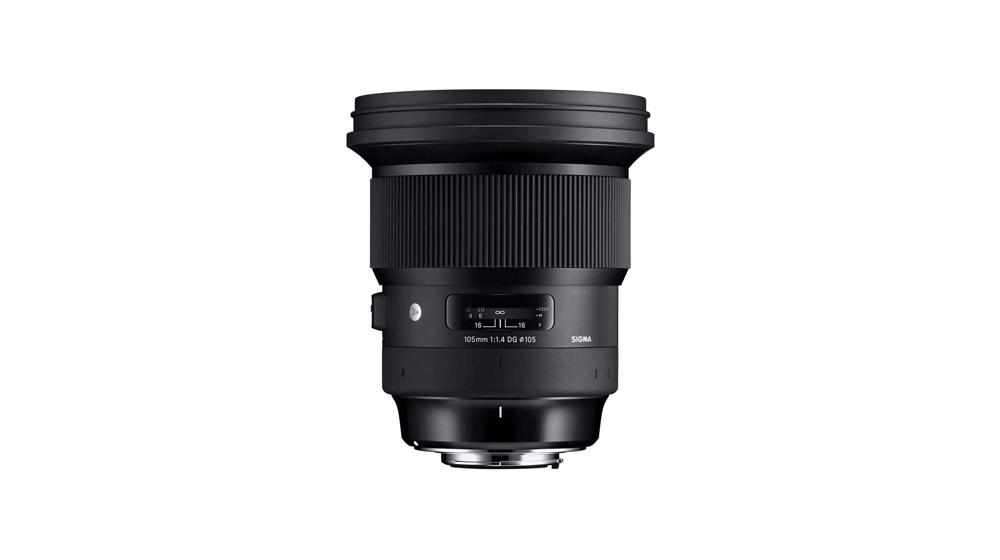
The Sigma 105mm f/1.4-16 Standard Fixed Prime Camera Lens is a powerful lens with a wide-aperture and advanced optical layout. The lens incorporates 17 optical elements in 12 groups, including three FLD glass elements, two SLD glass elements, and one aspherical lens element. This combination ensures minimal chromatic aberration and exceptional resolution, even at the edges of the frame.
Featuring a bright f/1.4 maximum aperture, the Sigma 105mm lens excels in low-light conditions and provides precise control over depth of field. The lens utilizes FLD and SLD glass to effectively control chromatic aberrations and color fringing, resulting in remarkable clarity and color accuracy.
Features:
- Wide aperture for beautiful defocused effects
- Exceptional optical performance with 17 elements in 12 groups
- FLD and SLD glass elements for reduced chromatic aberrations
- Super Multi-Layer Coating for improved contrast and color fidelity
- Hyper Sonic Motor for quick and quiet autofocus
- Full-time manual focus override
- Durable construction with dust and splash resistance
- Removable tripod collar with Arca-type compatible foot
- Protective coating on the front element for easy cleaning
Pros:
- Outstanding image quality and sharpness
- Beautiful bokeh for artistic effects
- Versatile for various photographic applications
- Fast and accurate autofocus performance
- Solid and durable construction
Cons:
- Large and heavy compared to other lenses
- High price point
- Fixed focal length limits flexibility
- Not suitable for close-up or macro photography
Sigma 105mm f/1.4-16 Standard Fixed Prime Camera Lens
Exploring Prime Lens Categories
Standard Prime Lenses
- Focal length: Typically between 40mm and 60mm.
- Key Characteristics: They are versatile, compact, and offer superior image quality.
- Applications: They are best suited for portrait, street, and travel photography.
- Advantages: They produce images that closely mirror human eye perspective, generating a greater sense of familiarity and realism.
Telephoto Prime Lenses
- Focal length: Generally over 85mm.
- Key Characteristics: These lenses are designed to photograph distant subjects and allow isolation of subjects from the background.
- Applications: They are ideal for portrait, wildlife, and sports photography.
- Advantages: They create a shallow depth of field, flattering perspectives, and offer professional-quality bokeh.
Wide-Angle Prime Lenses
- Focal length: Usually less than 35mm.
- Key Characteristics: They provide a broad field of view and high image quality.
- Applications: They are excellent for landscape, architecture, interior, street, and travel photography.
- Advantages: They encourage creative use of foreground elements and lines, and enable photographers to capture wide scenes.
Macro Prime Lenses
- Key Characteristics: These lenses provide extreme close-up focusing capabilities.
- Applications: They are perfect for nature, product, and food photography.
- Advantages: They capture intricate details and offer 1:1 magnification, reproducing subjects at their actual size on the camera sensor.
Special-Purpose Prime Lenses
- Types: This category includes lenses such as tilt-shift, soft focus, and others.
- Applications: Tilt-shift lenses are useful for architectural photography and creating miniature effects. Soft focus lenses are preferred for portrait or wedding photography.
- Advantages: These lenses are designed for specific needs, offering creative options that are not achievable with other lens types.
Each lens category caters to specific photography needs and scenarios, aiding photographers in crafting impactful images. From the human-eye-like view of standard lenses to the creativity-enhancing special-purpose lenses, photographers have a wide array of tools at their disposal. The choice of the right lens, based on the situation and the desired effect, facilitates the capture of high-quality, captivating images.
Advantages of Prime Lenses
Image Quality
One of the main advantages of prime lenses is their superior image quality. Due to their simpler design and fewer moving parts, prime lenses can produce sharper images with more detail than zoom lenses. The fixed focal length of prime lenses contributes to their superior optical quality, making them capable of producing high-resolution images with minimal distortion. The level of detail that can be achieved in images shot with a prime lens is often a key reason photographers choose to include them in their gear.
Low Light Performance
Prime lenses often have wider maximum apertures compared to zoom lenses. This means they can allow more light to reach the camera sensor, significantly improving performance in low light conditions. The ability to shoot at wider apertures means that photographers can avoid increasing ISO settings, which can lead to noise in the image. This makes prime lenses particularly useful for indoor photography, night photography, or any challenging lighting situation.
Depth of Field Control
Due to their wide apertures, prime lenses offer excellent control over depth of field. They can produce a beautiful bokeh effect, blurring the background while keeping the subject sharp. This can help isolate the subject from the background, making them stand out. This control over depth of field is a key reason why many portrait photographers love using prime lenses.
Weight and Size
Prime lenses are generally lighter and more compact compared to zoom lenses. This is primarily due to their simpler design requiring fewer lens elements. The reduced size and weight make prime lenses ideal for travel photography, street photography, or any situation where carrying less gear is beneficial.
Encourages Creativity
Because prime lenses have a fixed focal length, they challenge photographers to think more about composition. Without the ability to zoom in or out, photographers need to move to frame their shots physically. This can encourage creativity, leading to more unique and thoughtful compositions.
Choosing the Right Prime Lens
Determining Your Photography Needs
The first step in choosing the right prime lens is understanding your photographic needs. What types of subjects do you most often photograph? For instance, if you’re drawn to portrait photography, a prime lens with a focal length of 85mm or 135mm would be a good choice due to their flattering perspective and ability to create a beautiful bokeh. On the other hand, if you love shooting landscapes or architecture, a wide-angle prime lens, such as a 24mm or 35mm, would be more suitable because of its wider field of view. Evaluating your needs and preferences will guide your lens selection.
Considering Your Camera Body
Your camera body is another critical factor to consider when choosing a prime lens. Both the lens mount and sensor size can affect how a lens performs. For instance, a 50mm lens will act as a standard lens on a full-frame camera but behave more like a short telephoto lens on a crop sensor camera due to the crop factor. You’ll want to ensure that the prime lens you’re considering is compatible with your camera body and will deliver the desired field of view.
Weighing Quality and Cost
When choosing a prime lens, it’s crucial to balance the quality of the lens with its cost. Higher-end prime lenses generally offer better image quality, build quality, and wider apertures at a higher price point. However, many affordable prime lenses on the market also deliver excellent performance and value. It’s important to research and read reviews to understand the strengths and weaknesses of different lens options within your budget.
Understanding Lens Specifications
Before making a purchase, take time to understand the lens specifications. The focal length, maximum aperture, autofocus capabilities, build quality, and other features should all be considered. Look at the lens’s MTF charts if available; they’ll give you a good idea of its sharpness and optical quality. Also, consider factors like lens construction, weight, and size, particularly if you intend to carry the lens for long periods.
Trying Before Buying
If possible, try the lens before buying. Renting a lens or borrowing one from a friend can give you a sense of its performance and help you decide if it fits your photography style. Spend some time shooting with it in different conditions and aperture settings to assess its performance. This firsthand experience can be invaluable in making an informed decision.
Examples of Prime Lens Uses in Different Genres of Photography
Portrait Photography
Prime lenses are widely used in portrait photography, especially in the 85mm to 135mm range. Their longer focal lengths offer a flattering perspective for the subject, and the wide apertures allow for a shallow depth of field, creating a beautiful background blur that helps the subject stand out. A prime lens like the 85mm f/1.4 is a favorite among many portrait photographers.
Street Photography
For street photography, a smaller and lighter prime lens is often ideal. Common choices are the 35mm and 50mm lenses. They offer a field of view that is relatively close to the human eye, making the images feel natural and intuitive. The compact size of these lenses also makes them less conspicuous, an advantage when photographing people in public spaces.
Landscape Photography
In landscape photography, wide-angle prime lenses, such as a 24mm or 35mm, are commonly used. They allow for a wide field of view, capturing expansive vistas. These lenses can exaggerate the sense of depth and scale in an image, creating a dramatic perspective. The excellent sharpness of prime lenses also ensures that all the details in a landscape can be captured clearly.
Macro Photography
A macro prime lens, such as a 60mm or 100mm, is often used for macro photography. These lenses have a 1:1 magnification ratio, allowing you to capture close-up details of small subjects at a high level of detail. Their superior sharpness and wide apertures make them perfect for this kind of precision photography.
Astrophotography
Prime lenses are popular for astrophotography due to their wide apertures and excellent low-light performance. A wide-angle prime lens with a fast aperture (like f/1.4 or f/2) allows more light to reach the sensor, making it easier to capture details of the night sky. For instance, a 24mm f/1.4 lens can capture a large portion of the sky and allow enough light in to reveal stars and celestial bodies. The prime lens’s superior sharpness ensures that stars and other distant objects are captured.
Frequently Asked Questions (FAQs)
What is a prime lens?
A prime lens is a type of camera lens with a fixed focal length. This means that it doesn’t have a zoom function; instead, the field of view is constant, and if you want to get closer or further away from your subject, you have to physically move. Prime lenses are popular for their superior image quality, wide maximum aperture, and compact size.
What is the difference between a prime lens and a zoom lens?
The main difference between a prime lens and a zoom lens is that a prime lens has a fixed focal length, while a zoom lens offers a range of focal lengths. This means that with a zoom lens, you can change your field of view and zoom in or out without moving, whereas with a prime lens, you must physically move closer or further away from your subject.
Why should I use a prime lens?
Prime lenses offer several advantages. They typically produce sharper images with less distortion because they have fewer glass elements than zoom lenses. They also have wider maximum apertures, allowing for better performance in low light and the ability to create a shallow depth of field for a beautiful bokeh effect. Finally, they are usually more compact and lightweight than zoom lenses, making them a good choice for travel photography.
Is a prime lens better than a zoom lens?
Whether a prime lens is better than a zoom lens depends on your photography needs. Prime lenses usually offer better image quality and wider apertures, making them ideal for low light photography, portrait photography, and any situation where you want a shallow depth of field. However, zoom lenses offer more flexibility with their variable focal length, making them more versatile for situations where you need to quickly change your framing, such as in wildlife or sports photography.
What is the best prime lens to start with?
A 50mm prime lens, often referred to as a “nifty fifty,” is a great starting point. It provides a field of view similar to the human eye, making it versatile for various types of photography, including portraits, landscapes, and street photography. It’s also typically affordable and compact, making it a good choice for beginners.
Can I use a prime lens for landscape photography?
Yes, you can use a prime lens for landscape photography. Wide-angle prime lenses, such as a 24mm or 35mm, are particularly popular for this genre as they allow you to capture a wide field of view. The superior sharpness of prime lenses ensures that all the details in a landscape can be captured clearly.
Is a prime lens good for beginners?
A prime lens can be an excellent choice for beginners. Using a prime lens encourages photographers to move around and be more deliberate with their framing and composition, which can improve photography skills. Furthermore, the superior image quality and wide aperture of prime lenses can help beginners better understand the impact of aperture on photos, such as the relationship between aperture, depth of field, and light.
Image: Amazon
This article, “Prime Lens: Best Choices for Your Business” was first published on Small Business Trends